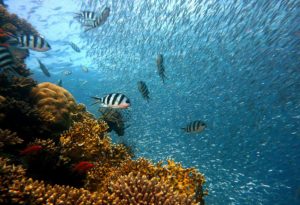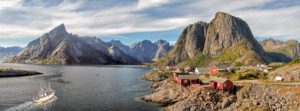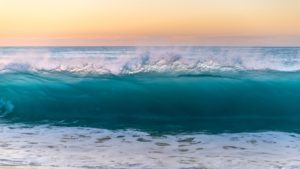Blue Tech Voices is a new series connecting you with leaders in the Blue Economy that are driving blue tech innovation. In this post I interview the Governor’s Maritime Sector Lead in Washington State, Joshua Berger, about Maritime Blue: an exciting new initiative supporting sustainable economic development of the maritime industry in the Pacific Northwest. Read-on to learn what makes Washington a unique location for blue tech innovation.
First, some quick background. In early 2019 Washington State Governor (and presidential candidate) Jay Inslee launched the Maritime Blue 2050 initiative, the first initiative of its kind in the country to bolster innovations in the maritime sector that create living-wage jobs, protect the environment and ensure long-term sustainability for the industry. The initiative is meant to build on Washington’s strengths as a global leader in maritime technology innovation and best practices. Joshua Berger laid much of the groundwork leading up the launch of this initiative, read his answers to my questions about Maritime Blue below.
What is unique about the Pacific Northwest that led to the creation of Maritime Blue?
Washington State is unique. We are in the Pacific Northwest which sometimes feels removed from other maritime regions. Therefore, the state’s maritime industry is incredibly diverse and interdependent. I often say “from paddle boards to containerships,” Washington’s maritime industry contributes over $37 billion to our state’s economy, employing nearly 100,000 direct jobs and impacting over 200,000 more, making it the most trade dependent state in the US. We design and build world class vessels, operate the largest ferry system in the US, are home to the fastest growing cruise industry, and serve as a world class boating destination. We have a $10 billion fishing industry, a robust supply chain, service industry, and world class research institutions working on everything from underwater robotics to novel energy storage technologies. Combine this work with a rapidly growing tech industry driven by groups like Microsoft and Amazon, high amounts of capital looking for investments, a strong environmental conservation ethic, and a culture of collaboration. Washington is primed to become a leader in maritime innovation.
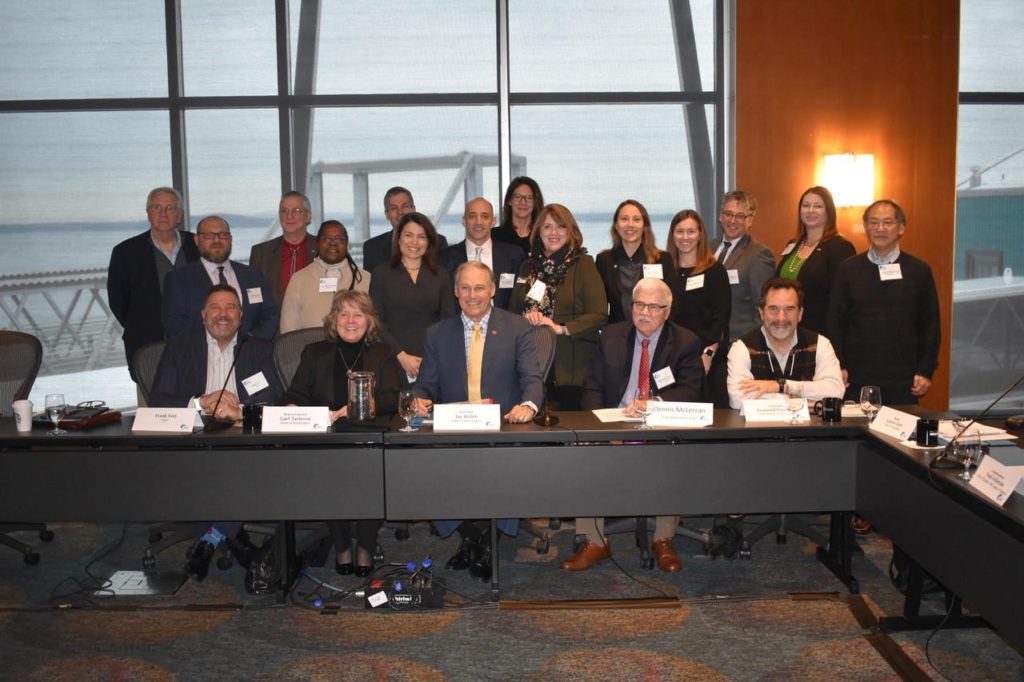
What are the essential elements that brought Maritime Blue to fruition?
This has truly been a public and private partnership from the beginning. Having previously worked to stand up a statewide trade association for the breadth of the industry, one of the key goals was to better tell their story of environmental leadership. In my current role, my job is to be the liaison between industry interests and state government. It’s a unique role: I serve as a policy advisor specific to my sector as well as lead strategic economic development goals. When we began the process to develop a plan to accelerate the Blue Economy here in Washington, the Governor called together a Maritime Innovation Advisory Council made up of state and local government leaders, industry executives, leaders from research institutions, organized labor, tribes, workforce development, and community groups. We built consensus on the goals and recommendations outlined in the Strategy and we maintain that diverse leadership as we now shift towards implementation.
How did you build trust with industry or other key stakeholders?
To be honest, it took years. When my role was first established by Governor Inslee in 2013 a former Port of Seattle Executive, Steve Sewell, was appointed as the first Maritime Sector Lead. Steve began the process of bringing together diverse industry interests. We worked together to found the Washington Maritime Federation. That Association of Associations (as we called it) took the first steps to find more productive communication channels with industry. When I came into this role in 2015, we started with finding a common vision for the industry and shared values with the broader community. We all agreed that we wanted a “world-class, thriving and sustainable maritime industry built on the values of the Blue Economy” – a growing maritime economy, healthy ecosystems, and resilient communities. Once that agreement was in place we began setting goals, finding models and examples, and committing our plans to action.
Simple… 🙂
The trick going forward is maintaining and strengthening the trusting relationships we’ve built while folding in additional stakeholders as we expand and begin implementing the goals and infrastructure we put in place.
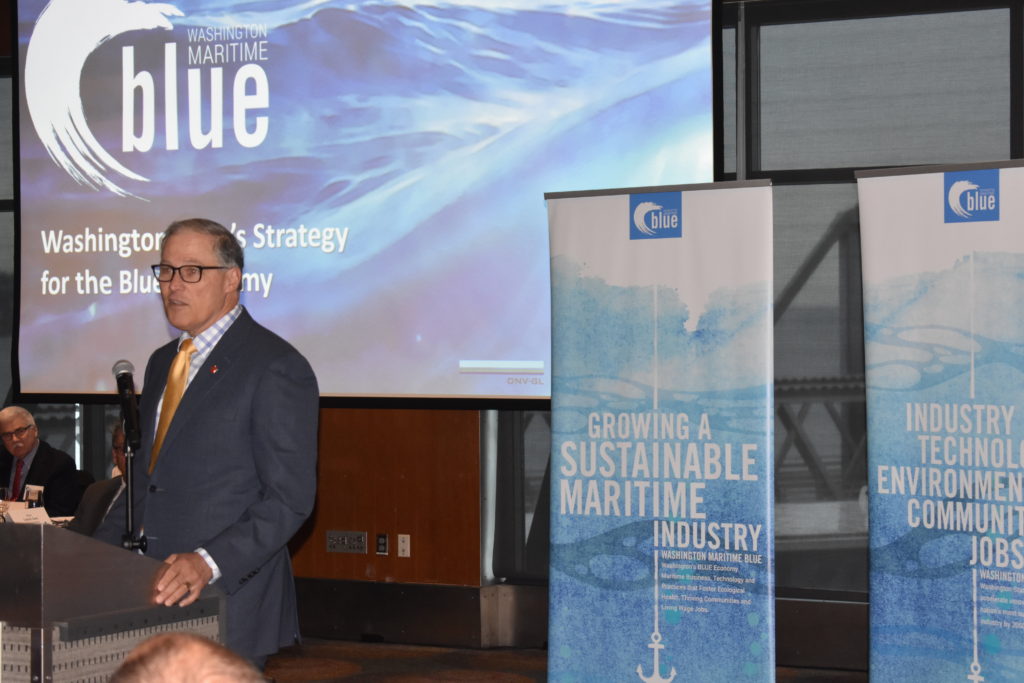
Maritime Blue is just getting started, but can you comment on the long-term vision?
I’m proud of the work we did to ensure that the strategy we developed with all of these diverse stakeholders is more than a plan on a shelf. We were very intentional to put in place accountability to the plan. The most effective tool we’ve seen is the cluster organization. Following the model of public-private partnership, the cluster model supports and requires these key elements to work together to accelerate innovation and support entrepreneurship.
We launched an independent cluster organization whose mission is to implement Washington State’s Strategy for the Blue Economy. Over the long term, we expect the cluster will gain further traction and momentum by attracting investment, creating jobs, supporting a culture of entrepreneurship and competitive cooperation, and building bridges to communities that are otherwise affected or underrepresented.
How do you see it impacting the maritime community in the region?
This cluster model, or technology based economic development, is a new concept for many in the US and most certainly in our maritime sector. It is different than a trade association in that the focus is really on projects versus policy. It forces us to look outside of our sector for new ideas and take some risks.
The world of innovation and entrepreneurship love to use the word “disrupt,” but as a sailor that is about the worst thing one could say or intend. In maritime, it’s about stabilizing chaos, not encouraging it. There is a balance that we’re trying to tap into; innovation comes from doing things in new ways and “failing fast,” but not upending the industry. Investors are betting on technologies, but when margins are thin and the capital investments are huge, there is much smaller risk appetite.
In maritime, it’s about stabilizing chaos, not encouraging it.
That’s the beauty of the Cluster Organization: it manages the risk. It seeks opportunity, builds bridges, facilitates knowledge sharing, technology transfer, and commercialization of technologies. If the (little c) cluster of members are collaborative and sharing risk, analysis, and investments, then we are quite literally “raising the hulls of all ships.”
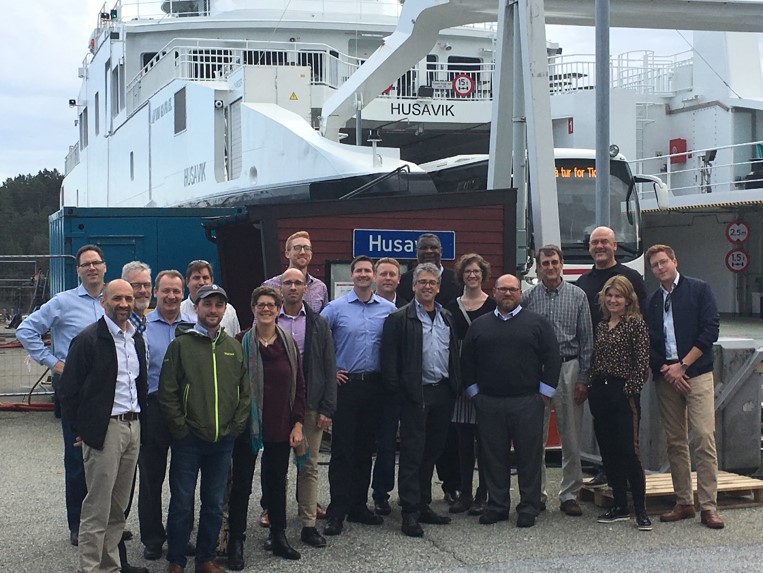
What sorts of services, infrastructure, grants, or other types of support will WA Maritime Blue be rolling out to support startups?
The scope of work of WA Maritime Blue is six fold…. We call them the 6 F’s: Focus, Forums, Forward, Force, Finance, and Facility.
- Blue Focus is a communications and marketing campaign. We need to do a much better job telling the story of our sector and our members. We are also trying to reach out to new audiences. Maritime has been very good at talking to ourselves and not so good communicating with others. Maybe it’s the strange language and salty beards? We need to reach the tech sector and those in control of risk capital. We need to reach underrepresented communities and learn to communicate with diverse groups.
- Blue Forums are open, public knowledge sharing events. This is where we discuss the latest in technological developments, address community issues, or invite new audiences to the working waterfront to learn about the maritime industry.
- Blue Forward is where much of the work takes place. This is where we are facilitating Joint Industry Projects, connecting members and research institutions, providing training and business services to include trade missions and cluster-to-cluster connections.
- Blue Force creates industry driven workforce development programs. We are starting with the coordination of the Youth Maritime Collaborative – a group of youth-serving organizations that provide on the water experiences for disadvantaged youths or underrepresented minorities that otherwise do not have access or awareness of the opportunities in the maritime industry. We will create diverse and inclusive pathways for future generations to enter the maritime workforce, to include addressing bias in the workplace.
- Blue Finance is supporting creation of a Blue Innovation Fund to drive investments in the Pacific Northwest’s maritime industry. We don’t intend to manage a privately capitalized fund but we do intend to encourage it and then offer our network of entrepreneurs and businesses as a investment opportunities, and our members and stakeholders as market experts.
- Blue Facility is the development of a Maritime Innovation Center and related programming which will be a focal point for all of the work mentioned above. With a hub and spoke model out to our more rural maritime communities, this Center will both house accelerator and/or incubator activities, public-facing events, and provide co-working space benefitting all types of our members, from large global firms to local startups. Although the physical building may be a few years out, we are currently working on recruiting a first round of entrepreneurs for a pilot accelerator program utilizing the existing network of accelerator programs in the area. We do not want to try and re-create the “special sauce” of those already doing this work, but rather offer the network, expertise and support for maritime-focused solutions.
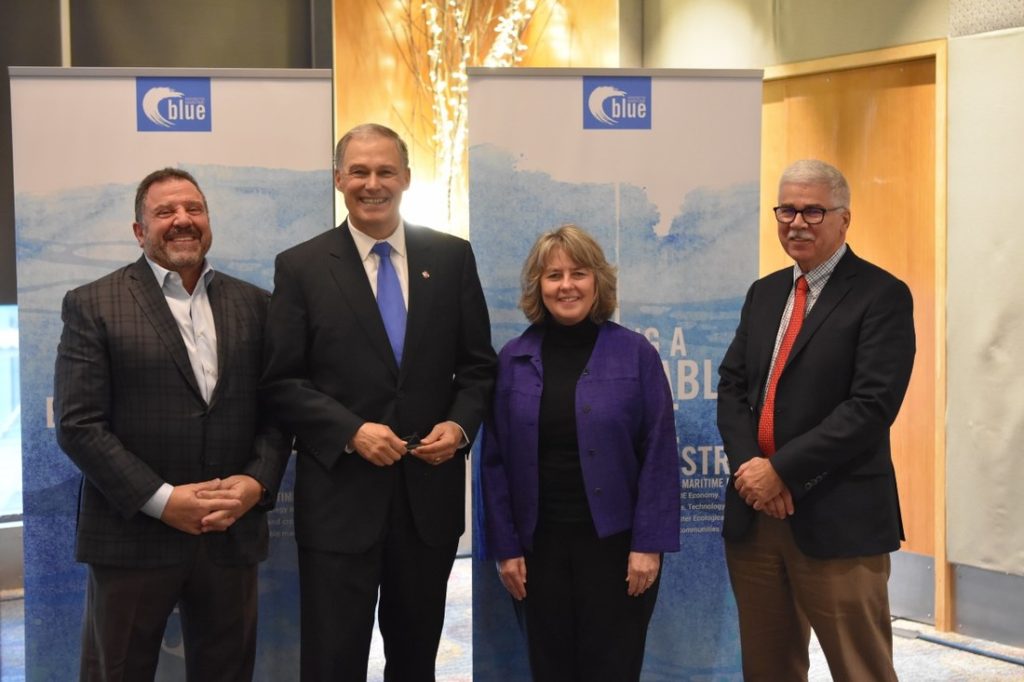
There are lots of blue tech and maritime tech startups out there, do you have any suggestions for how they can best work with WA Maritime Blue?
There are a couple key areas where our region has the potential to accelerate blue tech and support those entrepreneurs. First is the intersection of Data, Digitalization and IoT solutions for maritime optimization and decarbonization. With world-class talent in software and data engineering here in Seattle, there is no good reason that we are not better connecting challenges with tech solutions. Washington State is also a Center of Excellence for technology development in electrification of vessels. We have all the prime ingredients with our wealth of naval architects, marine engineers, quality shipyards and burgeoning sector of energy storage and propulsion integrators. Don’t forget that we operatie the largest ferry fleet in the US and have plans to fully electrify the fleet moving forward. There are also great opportunities in sustainable fishing solutions and seafood processing. We are at an interesting nexus between ocean tech (marine science and research technology) and traditional maritime markets and operations. Many foresee opportunity for tech transfer and investment.
In short, I would suggest to both the Blue Tech entrepreneurs and existing maritime companies (large and small) to just come participate. There are multiple access points to come meet the cluster and see the community that is growing around it: attend a public event, talk to our members and learn for yourselves. So far we have had tremendous participation right out of the gate, we currently have over a dozen industry members and 20 plus organizational partners.
Huge thanks to Joshua Berger for taking time out of his busy schedule to share his thoughts on blue tech and his vision for Washington’s Maritime Blue Initiative. It’s a wonderful case study on how government and industry can successfully work together to drive innovation and foster sustainable economic development in the maritime sector.
If you want to learn more about Maritime Blue, be sure to check out their website at www.maritimeblue.org or connect with them via email at [email protected] or via LinkedIn and Twitter at #WaMaritimeBlue. Joshua can be reached on twitter at @JoshuaMBerger and @maritime_blue.
Joshua Berger Bio
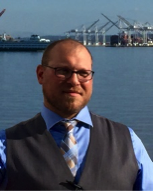
As the Governor’s Maritime Sector Lead for the State of Washington, Joshua works as the liaison between maritime industry stakeholders, the Governor’s office, legislature and state agencies. As Sector Lead he focuses on economic development, building public/private partnerships, and ensuring a 21st century workforce. In his role, Joshua developed Washington’s strategic vision for a sustainable, decarbonized maritime industry alongside the development of a Maritime Innovation Center. To implement, Joshua has founded Washington Maritime Blue, an independent cluster organization and strategic alliance for innovation and sustainability in the maritime sector. Previously, Joshua served as Director of the Washington Maritime Federation and brings extensive maritime industry experience to his position. He earned a Master’s Degree from Antioch University Seattle in Participatory Planning. Joshua is also a professional Merchant Mariner having worked in the towing industry and spent six years as captain of the historic schooner Adventuress. He and his wife, Miranda, are raising their children in Seattle to be sailors and stewards in the Pacific Northwest.

